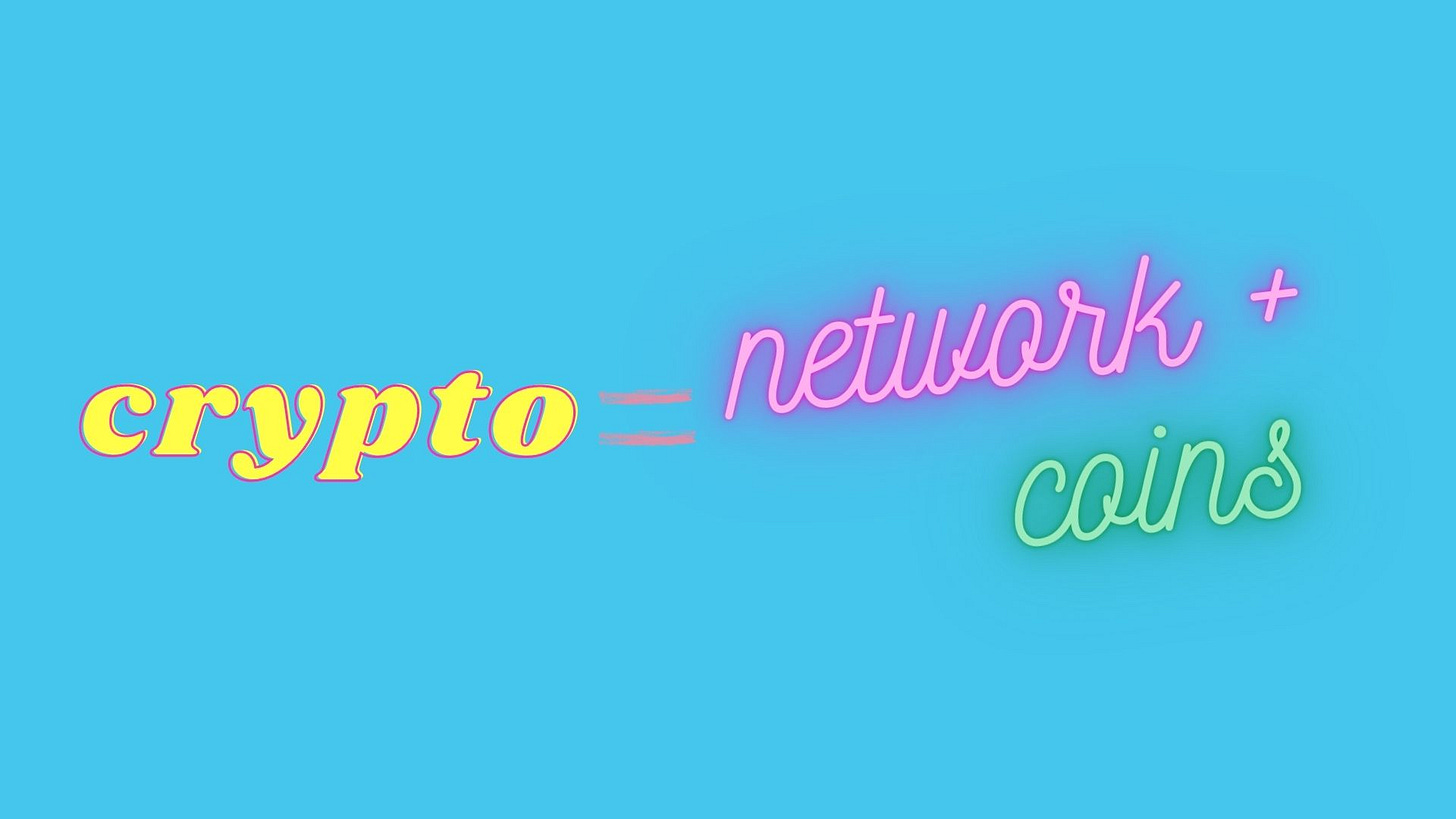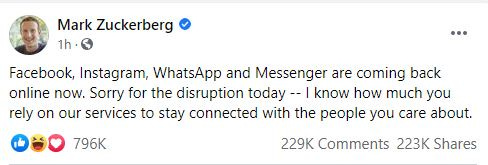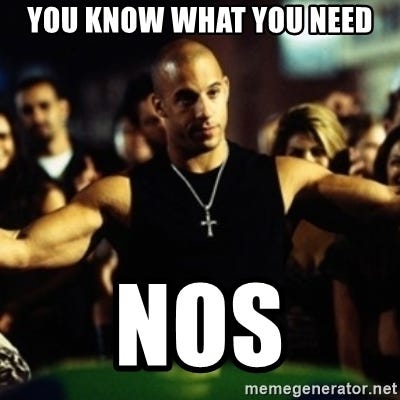#9 The Crypto Equation
Join the 280 readers (+6 since last week) of HAX Weekly who are setting themselves up for the future by learning about all things crypto & the metaverse and subscribe below.
1 Concept 💡
When people talk about crypto, the conversation often centers on the price of a coin or token. They’ll say “can you believe Bitcoin crossed the $50K threshold or how so-and-so token went up or down by 25% yesterday?!”. While price is certainly fun to talk about and easy to grasp, the almost exclusive focus on price naturally leads to the (incorrect) conclusion that’s what crypto is: new digital assets to speculate on.
However, the truth is crypto is actually the combination of two separate things: a decentralized network AND a coin/token with a price. Think of it like a Ferrari and a full tank of gas — unbeatable when joined together but not too useful when separated. In order to grok crypto’s potential that we discussed last week in #8, it’s important to understand the overlooked but perhaps more important piece of the crypto equation: the decentralized network. Today, we’ll discuss:
What networks are and why they matter
Centralized vs. Decentralized
How crypto coins/tokens supercharge decentralized networks
Coming back to the crypto equation
What is a Network and Why They Matter
“A group or system of interconnected people or things”
Networks enable the movement of things (goods, information, money, etc) between participants with one crucial trait: participants don’t have to be directly connected to or know each other. Networks have been around for centuries from trade routes to telephones to the Internet (which btw literally stands for Interconnected Network). If you break it down, the magic of the Internet is that you can visit a website or download a file from another server that you don’t have a direct relationship with. Same with discovering someone on social media or booking a Uber. With networks, the possibilities are endless.

One of the most interesting phenomena that happens with networks is something called a network effect. Network effects happen when the network becomes more valuable as more people use it. As you see below, because each user can interact with one other, there is an exponential increase in both the number of connections and overall network value as users increase. Every new user benefits each existing user.
Network effects have driven the business models of Internet companies to dizzying heights. Every new merchant or customer on Amazon, every new user on Facebook, or every new driver on Uber creates exponentially more possibilities for transactions. If you only take away one thing from this section, take away “exponential”: networks enable exponential growth (more on this later!).
Centralized vs. Decentralized
The largest networks today (excluding crypto ones) on Earth are centralized. This means a single entity (often a company) owns the network. They oversee all transactions, own all the servers, have the power to modify the network in any way they want, and enjoy the ability to profit off of the network. Most internet businesses (Amazon, social media, Uber, etc) are all examples of centralized networks that have scaled to billions of users and made life more convenient for all of us.
But for all the advantages of centralized networks, there is one critical drawback: network owners become incredibly powerful and take the vast majority of the value created. Trading in power and $$ for convenience might seem like a reasonable trade-off at first, but as we discussed last week in #8, this ultimately leads to poor outcomes for users like you & me. As networks get exponentially larger by the day, users have less influence and become overly reliant: yesterday’s Facebook outage is a perfect example of the pitfalls of one entity having so much power over billions of people.
So what’s the alternative? One answer is decentralized networks: these are networks of peers where there is no single owner of the network. Instead, each piece (or operator) of the network works together in harmony to ensure the network is alive and functioning. Sound like a pipe dream? The Internet was actually designed to be a decentralized network to give users the advantages of network effects w/o the influence of a network owner. It’s why there is no “Internet Inc” who owns the Internet.
So what happened? Decentralized networks have traditionally been hard to scale because there was no real incentive outside of good intentions for every operator to keep working together. Eventually, the need for profits, disagreements or other priorities would take over and these networks tend to become centralized after a certain size, which is what happened to the Internet. So what’s different now?
How crypto coins/tokens supercharge decentralized networks
Crypto coins/tokens are NOS (nitrous oxide for you non-Fast and Furious fans!) that rev up decentralized networks to unparalleled heights by acting as rewards to network operators for supporting the network. For example, if you run servers to support the Bitcoin network, you get rewarded in Bitcoin the digital currency. Why is this a game-changer?
Digital rewards paid out directly to network contributors offer a way to scale decentralized networks in ways never before possible.
These rewards can increase network effects even more quickly than centralized networks. Think about what gets you more excited: to become a Uber passenger or to earn by supporting the Uber network?
Since rewards are paid in that network’s cryptocurrency, bad actors are incentivized to act in best interest of the network as its rewards will be of little value if the network fails.
Unlike centralized networks, the network is collectively owned by everyone which tends to produce more participation and better outcomes for users.

Coming back to the crypto equation
Once you understand that crypto is a devastating 1-2 punch of both a powerful decentralized network and coins/tokens that incentivize that network to grow, the potential of crypto comes into clearer focus. When you send 1 Bitcoin to someone across the globe in <1 min, the decentralized network processes that transaction for you — not what the price of Bitcoin is.
You might ask why does price even matter? In my view, investing in cryptocurrency is a vote with your dollars in the future strength of the network. As the price goes up (or down), the network becomes stronger (or weaker) since there is a growing (or reducing) demand to want to support it.
Oh one last thing: I promised we’d come back to exponential growth. As networks grow exponentially both in size and value, the data suggests that the impact on the price of the tokens which support it will be exponential too. As we talked about in #6 with the adoption curve, the exponential growth of crypto is just getting started and IMO will be much bigger and happen more quickly than we imagine.
Side note: My goal is to reach 500 subscribers by the end of October! If you love these, I’d appreciate it if you could share with atleast 1 other person who might like this!
2 Things On Our Mind 🤔
Programming note: we’ve decided to combine 2 themes and 3 things you should check out into one section moving forward to keep the quality bar high for what we include.
1. @punk6529 lays out the case for why crypto networks and NFTs are the future in a far better + smarter way that I did in last week’s edition. Check it out!

2. This article goes pretty deep in the weeds in crypto-land but gives you a sense of how it’ll be possible to earn interest on digital assets like NFTs. Crazy times!!
Until next week, always be learning
Karthik





